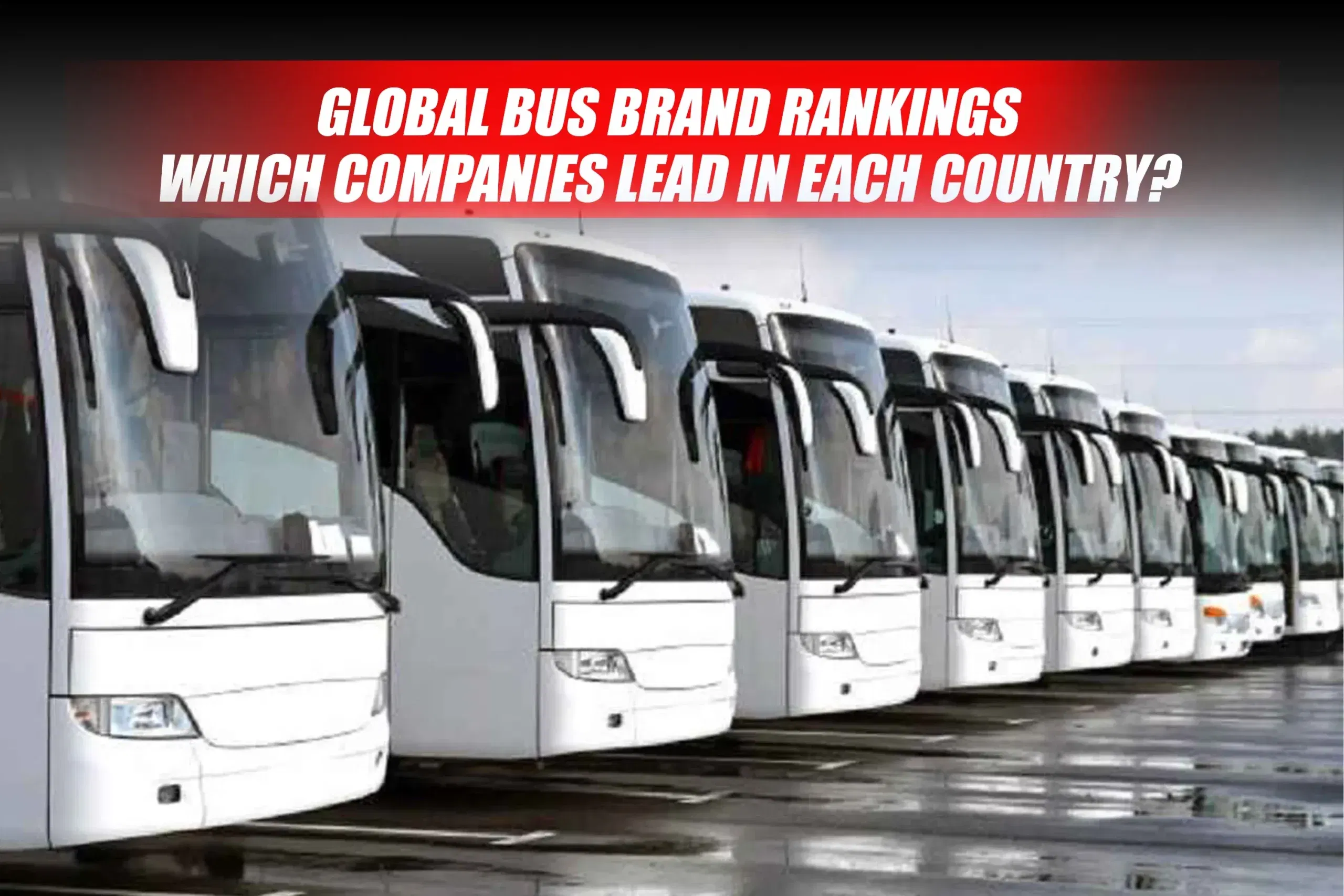Global commercial bus manufacturing drives global public and private transport. Demand increases with urbanization, environmental and passenger expectations. Manufacturers react with innovation, reliability, and competitive prices. Knowing the top countries and brands is important for fleet operators, policymakers, and investors. This article sheds light on the top five global bus-producing countries, the top commercial global bus brands in each, and bus price trends.
1. China: Yutong and King Long
China produces the most commercial buses in the world. Companies are aided by scale, government subsidies, and robust export networks. Yutong makes city buses, intercity coaches, and electric buses. The brand integrates cutting-edge technology and cost-effective solutions. Bus prices begin at $80,000 for small city buses and go up to $300,000 for luxury coaches.
King Long complements Yutong with technologically advanced and long-lasting buses. It focuses on domestic and global markets. Its emphasis on affordability, innovation, and reliability makes it strong in the commercial global bus market. Leadership in China arises from early electric mobility adoption, competitive price of buses, and large-scale production.
2. India: Tata Motors and Ashok Leyland
India is the second-largest commercial bus producer. Strong urbanization leads to a rise in demand for city, intercity, and luxury buses. Tata Motors manufactures a vast lineup of commercial vehicles, including municipal fleet, corporate transportation, and private operator buses. The bus price ranges from ₹25 lakh for base variants to ₹90 lakh for high-end configurations.
Ashok Leyland focuses on durability, fuel efficiency, and low cost of operation. The brand covers urban and rural transportation with a robust network throughout India. Growing use of hybrid and electric buses spurs both companies to develop new technologies while making buses price-friendly. Fleet operators favor these brands due to reliability, service infrastructure, and low cost.
3. United States: Blue Bird and Prevost
Domestic commercial buses specialize in school transportation, intercity tours, and luxury charter. Blue Bird Company specializes in school buses. The company provides long-lasting, safe, and affordable vehicles, with buses priced at about $90,000.
Prevost produces luxury coaches for tourism and corporate transportation. Buses are in the range of $350,000 to $600,000, based on customization and trim. Safety, reliability, and service network coverage remain key for U.S. operators, and this dictates brand dominance. Although having lower production levels than Asia, U.S. producers dominate specialized niches.
4. Japan: Hino and Isuzu
Japan manufactures medium and small commercial buses which are renowned for quality and durability. Hino is catering to intercity and tourist transportation, providing buses from ¥20 million to ¥50 million. The company concentrates on fuel consumption, compact dimensions, and safety features.
Isuzu makes medium and city buses with affordable solutions. Both brands are focused on operating reliability, emissions compliance, and hybrid technology. Japanese manufacturers match the toughness of local requirements with innovation, serving local demands while competing globally.
5. Europe (Germany & Sweden): Mercedes-Benz, MAN, and Volvo
Europe's leading bus manufacturers are targeting luxury, hybrid, and urban transport. Mercedes-Benz has intercity and city buses in the form of Citaro and Tourismo. Buses cost between €200,000 to €450,000.
MAN Truck & Bus focuses on durability and operational performance. Volvo Buses dominates hybrid and electric options, with buses ranging in price from €250,000 to €500,000. Technological adoption, emissions standards, and passenger comfort are most important to European fleet operators. These elements establish brand leadership and global competitiveness.
Factors Driving Global Bus Brand Leadership
A number of elements decide top manufacturing nations' leading brands:
- Buses Price: Cost factor drives adoption in the case of fleet operations.
- Production Scale: High volume facilitates distribution and cost-effectiveness.
- Technology: Hybrid, electric, and fuel-efficient buses are sought by operators.
- Service Network: Maintenance and availability of spare parts provide operational dependability.
- Regulatory Compliance: Safety and emission requirements influence procurement.
Knowing buses cost, production volume, and technological trends informs fleet owners and investors about how to make better decisions. With urban mobility changing and sustainability being a priority, these manufacturers keep pushing the boundaries, making commercial buses a keystone of global transportation.
For more articles and news, stay updated with 91trucks. Subscribe to our YouTube channel and follow us on Facebook, Instagram, and LinkedIn for the latest videos and updates from the automotive world!









